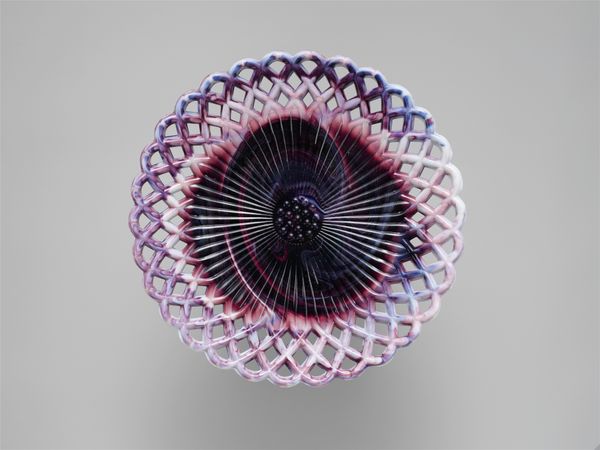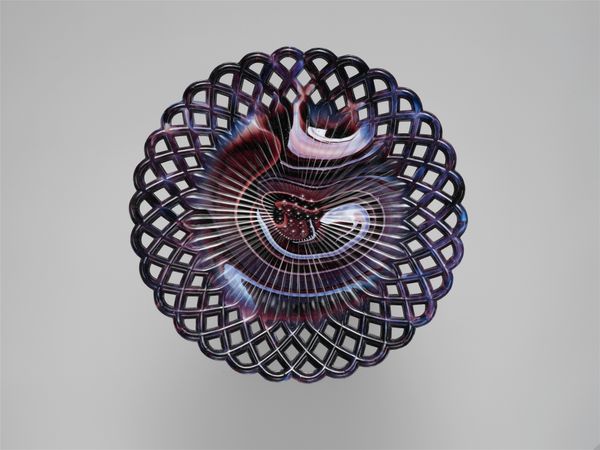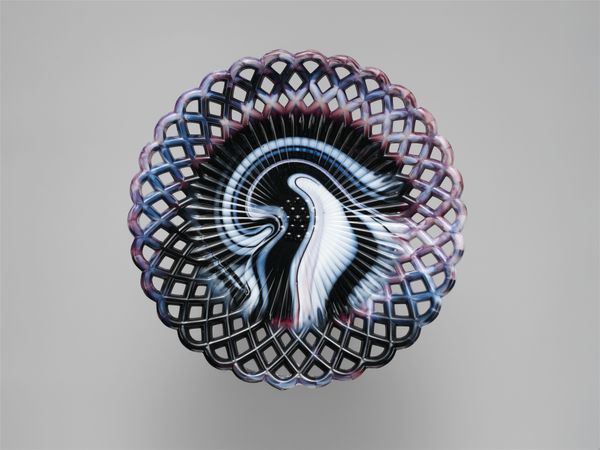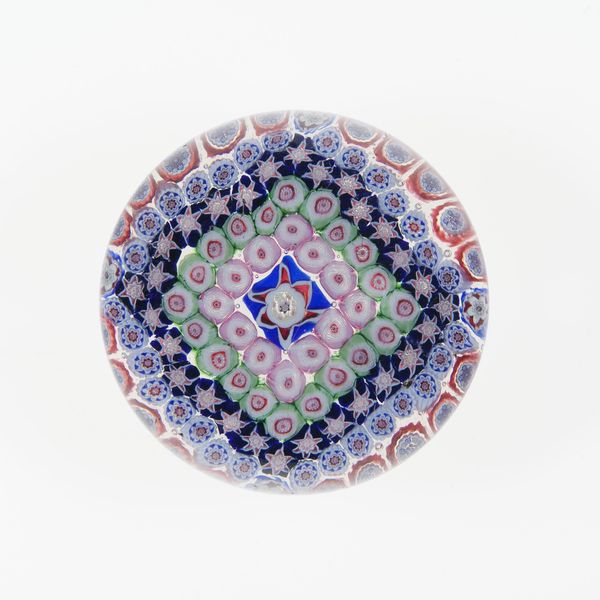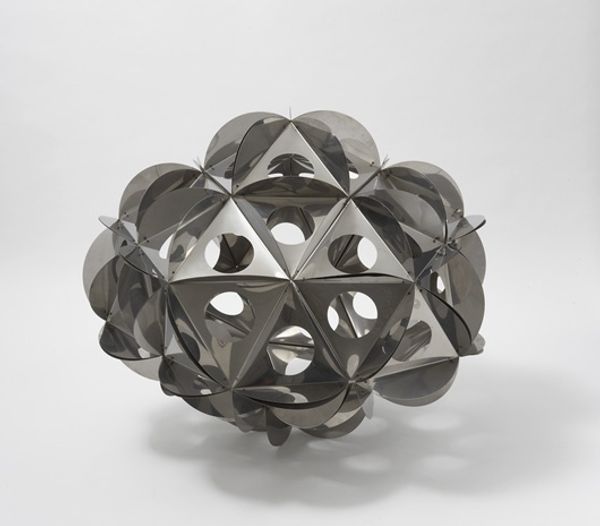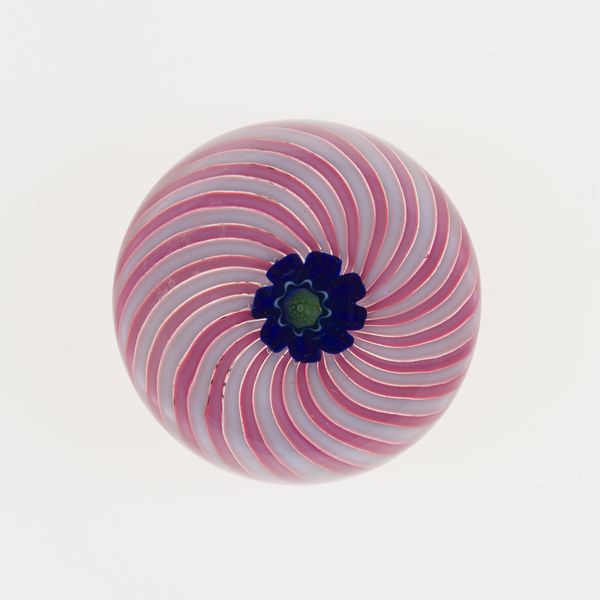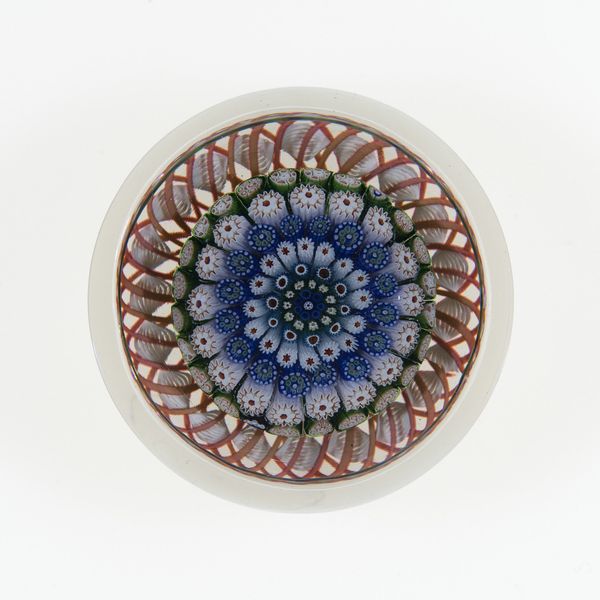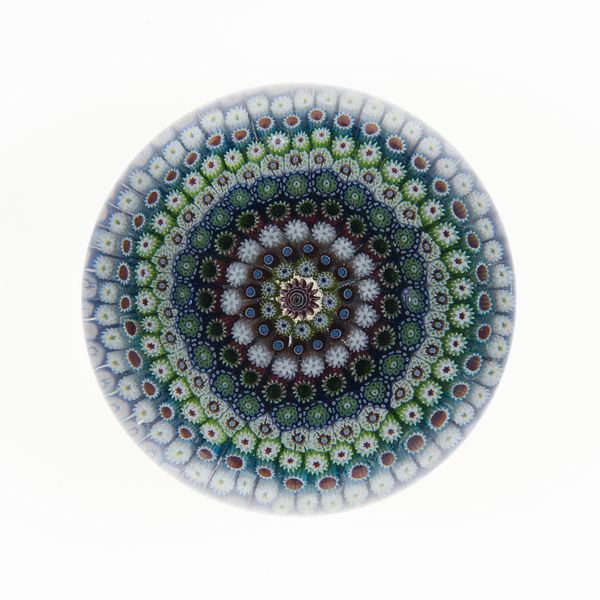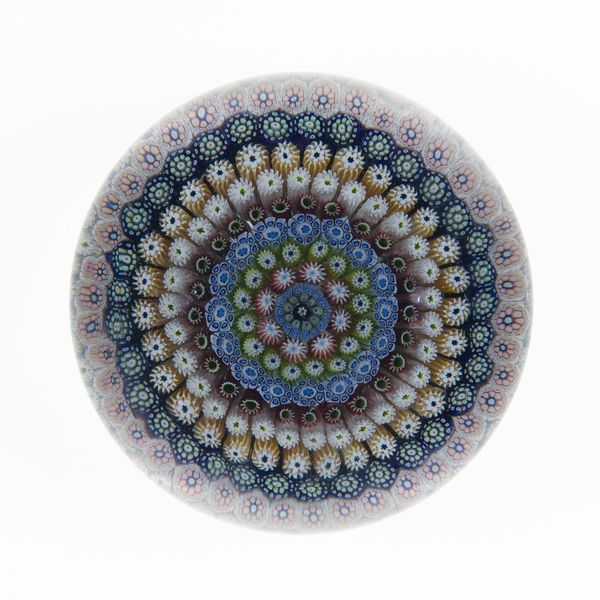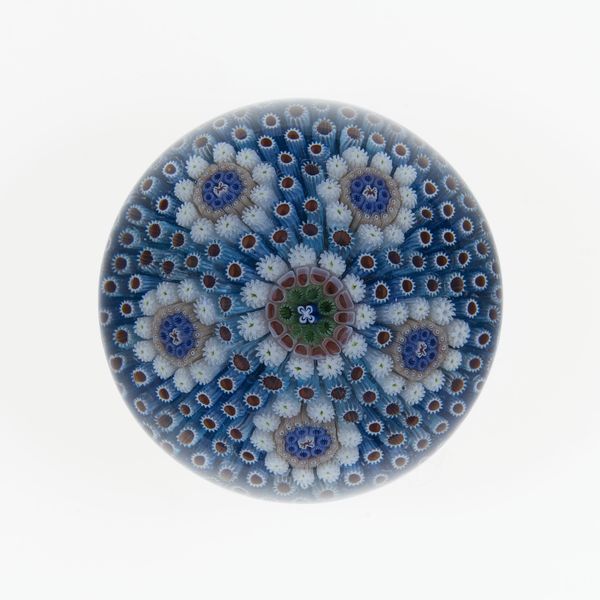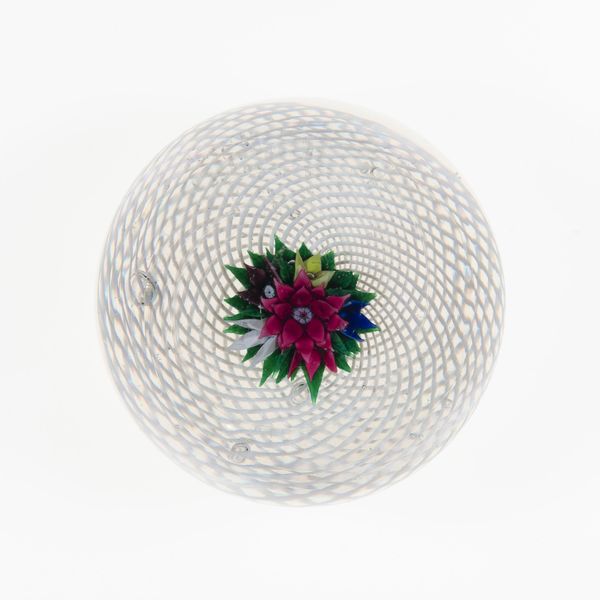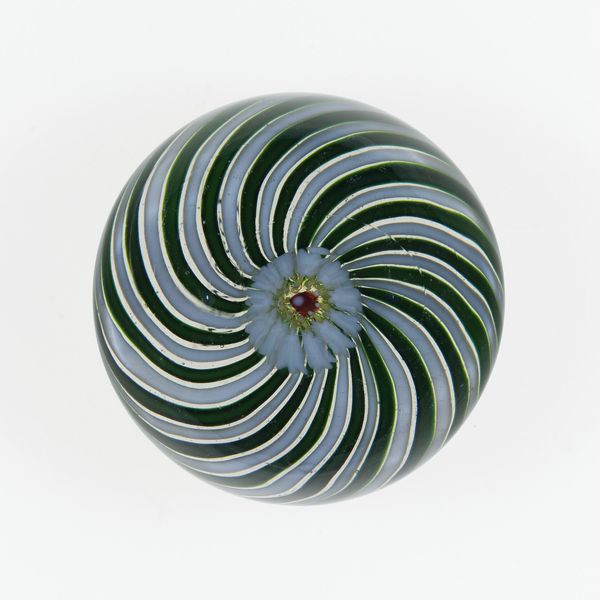
glass
#
glass
#
geometric
#
round circular shape
#
decorative-art
Dimensions: Diam. 10 3/8 in. (26.4 cm)
Copyright: Public Domain
Editor: This is a ceramic plate created by Challinor, Taylor and Company, sometime between 1870 and 1890. I find its spiraling interior pattern contrasted with the grid-like border incredibly striking, almost dizzying. How do you interpret this piece? Curator: This plate presents an opportunity to discuss the intersection of industrialization, aesthetics, and the role of women in the late 19th century. Mass-produced decorative objects like this one, while seemingly benign, reflect broader shifts in social structures and power dynamics. Editor: Could you elaborate on that? What's particularly feminist about a plate? Curator: Think about who was typically purchasing and using these objects. The rise of the middle class meant increased consumerism, and the home became a primary site for expressing social status. Women were largely responsible for decorating and managing the domestic sphere. By incorporating the geometric designs and repeating patterns, this piece flirts with ideas present within the Pattern and Decoration movement. It could have been revolutionary to challenge established artistic hierarchies which favored fine art over what some considered the "craft" of decoration. It’s essential to consider what messages these patterns of "domesticity" conveyed in the Victorian era. Editor: So, the plate isn't just decorative, it reflects a societal conversation? Curator: Exactly. Even the circular shape alludes to unity, which invites us to examine community participation at the time. How could its influence on social patterns challenge us today? Editor: I never thought I’d find a history lesson in a plate, but it gives a unique perspective. Thanks! Curator: And I am intrigued about its symbolism today and how the design still captures one's attention.
Comments
No comments
Be the first to comment and join the conversation on the ultimate creative platform.

